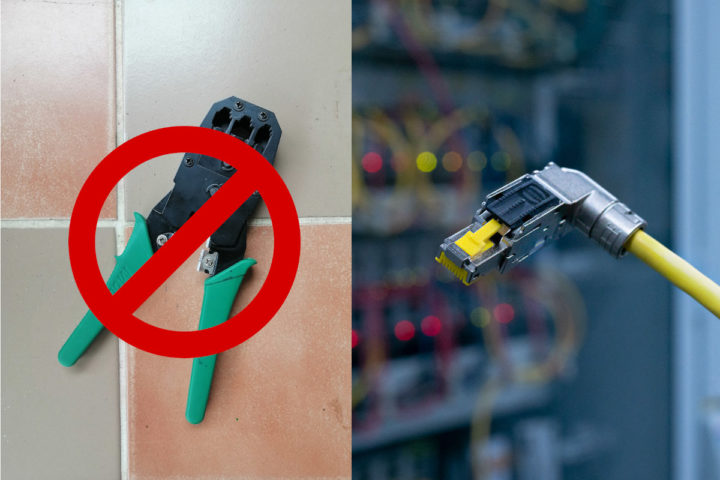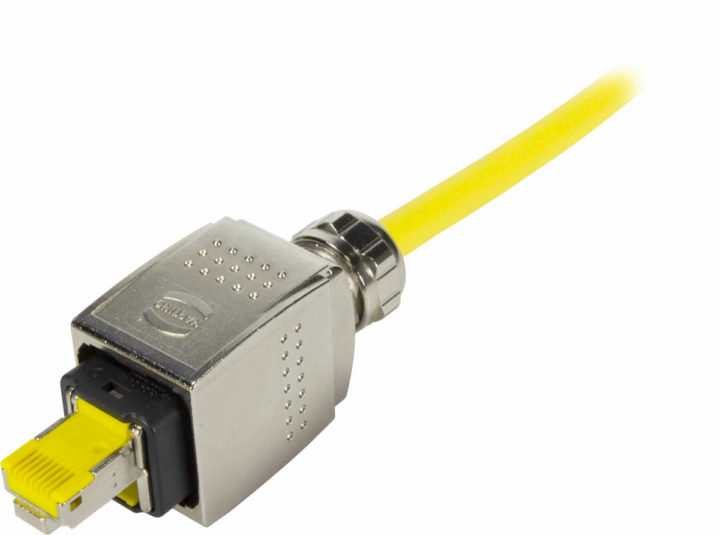You’d normally need a crimp tool to make or repair your own RJ45 Ethernet cables. The process is split into two parts with cable preparation for straight or crossed cables, and then assembly with the crimp tool, before testing your cable.
Harting RJ Industrial Multifeature is an RJ45 connector that is described as “tool-free”, and “robust and reliable: with integrated cutting tools for fast and easy assembly. So the crimp tool is not needed anymore.
The company explains it typically takes 50% of the time for the preparation of the cable and another 50% for connecting it to a traditional RJ45 plug. But the RJ Industrial Multifeature is said to save around 25% of the assembly time, by making the second part faster.
You’d still need to prepare the cable in the traditional manner, but then the second part of the assembly should be quite faster and less prone to errors. The “tool-free” is a bit of a misnomer, as it should really be “crimp tool-free” RJ45 connector since obviously, we still need some tools to cut the cables. The best way to understand how it works is to check the video below showing how to make a straight Ethernet cable using Harting plug.
The wires are automatically cut to size when closing the RJ45 connector. It works with flexible and rigid wires from AWG 26 to 22. The company also says the interface is “70% smaller in size, offering Gbit Ethernet with a more compact footprint”, but I don’t quite understand compared to what type of RJ45 connector…
The RJ45 plug complies with IEC 61076-3-124, ix Industrial, the future standard for 8-wire Gbit Ethernet in automation scenarios. The company also offers IP20 and IP65/67 Han PushPull casing combined with PoE power supply IEEE802.3af (PoE 15.4W), IEEE802.3at (PoE 25.5W), or IEEE802.3bt (PoE 100W).
You’ll find additional details on the product page. As one should expect, this type of RJ45 connector is not exactly cheap and listed for $25 and up on Mouser.

Jean-Luc started CNX Software in 2010 as a part-time endeavor, before quitting his job as a software engineering manager, and starting to write daily news, and reviews full time later in 2011.
Support CNX Software! Donate via cryptocurrencies, become a Patron on Patreon, or purchase goods on Amazon or Aliexpress






